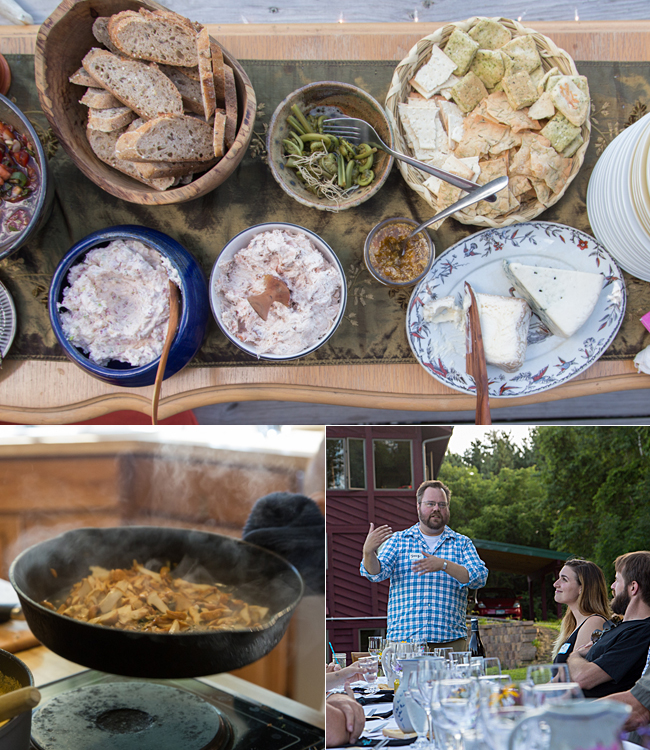
On July 16, a Foraged Feast was held for the benefit of Sportsmen for the Boundary Waters. The event was just as much a victory lap as it was a fundraiser: A petition to prevent sulfide-ore copper mining by Twin Metals (the Minnesota branch of a Chilean mining concern) in the watershed that contains the Boundary Waters Canoe Area Wildereness garnered 67,000 signatures in just 30 days, exceeding the expectations of the campaign, which seeks to preserve one of Minnesota’s most celebrated natural sites for future generations.
The feast was held at the Hawkins Family Conservation Farm on Amelia Lake in Lino Lakes. Purchased by Art and Betty Hawkins in the mid-1950s, the land, which had held a small decrepit dairy farm, was restored to native prairie grasses and forest. Art Hawkins, who died in 2006, was a student of Aldo Leopold at the University of Wisconsin, and he was a pioneering conservationist in his own right through his life’s work as a wildfowl manager and researcher at the U.S. Fish and Wildlife Service.
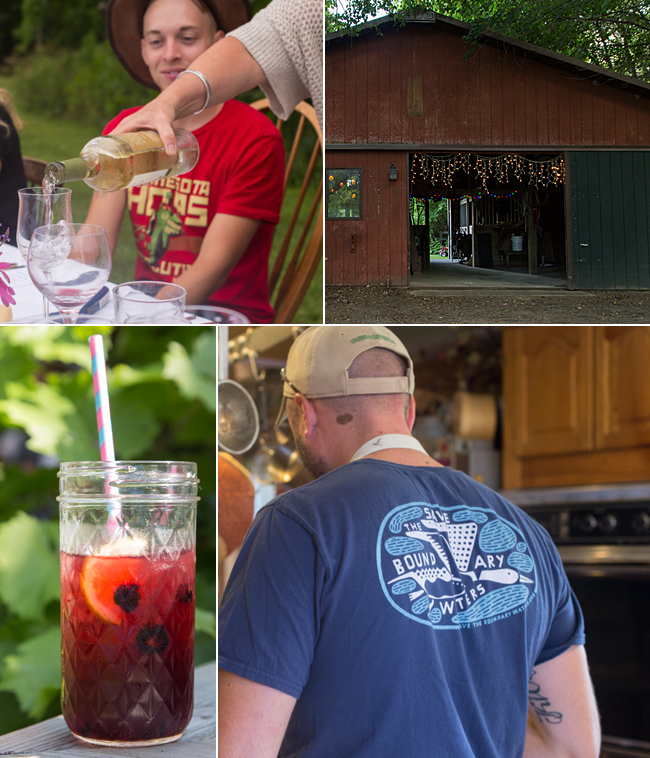
The Hawkins’ daughter, Amy Donlin, hosted the event at her home on the farm. Donlin’s daughter Piper Hawkins-Donlin, a staffer for Sportsmen for the Boundary Waters, organized the event. For the Hawkins family, conservation is a matter of heritage. And so it was for most of the attendees.
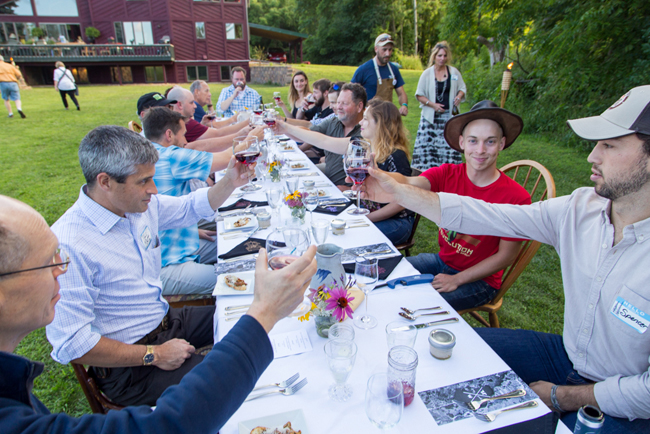
The evening started with cocktails prepared by Deb Gallop (former director of the Wargo Nature Center, master gardener, and forager) and hors d’oeuvres prepared by Gallop and Lukas Leaf, the former chef at Al Vento in Minneapolis. In keeping with the foraged theme, Gallop prepared a tincture for each of the two cocktails on offer using lilac flowers and elderberries. The drinks were garnished with black raspberries from the farm. The lilac cocktail was well balanced, floral, and fruity. The elderberry cocktail must have been good too, because by the second round (delayed for this guest by conversation and the aforementioned hors d’oeuvres), it had disappeared.
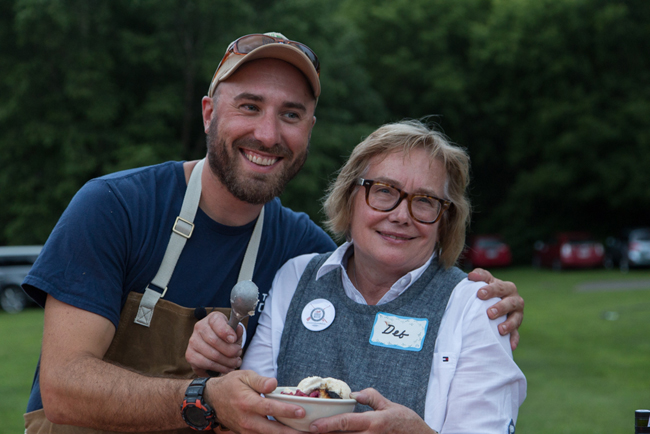
Picked fiddlehead ferns, labneh, and a smoked lake trout spread made by Gallop were highlights of the hors d’oeuvres and hinted at the foraged delicacies to come once we adjourned for dinner to the long white table nestled in a narrow clearing between the forest and the restored prairie grass.
Dinner opened with a duo of chanterelle mushroom dishes: crostini and soup. Both the charred bread with meaty mushrooms and the lemon-scented, richly creamy soup paired well with a stony Château de Chamilly Côte Chalonnaise pinot noir. Leaf said that he finds the best mushrooms in wildlife management areas, which are open to the public for recreational (and hunting and foraging) use.
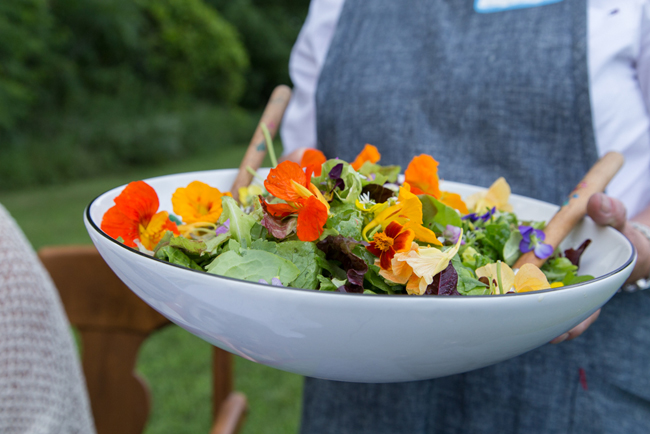
A summer salad with ramp vinaigrette followed. It featured all manner of lettuces from the garden and an equal measure of foraged flowers and various other greens from elsewhere on the farm. This was the most striking dish of the night — the brief Minnesota summer on full, colorful, display. Vivid and slightly peppery, the salad was paired with a fresh Domaine de Saint-Pierre Sancerre blanc from the Loire Valley.
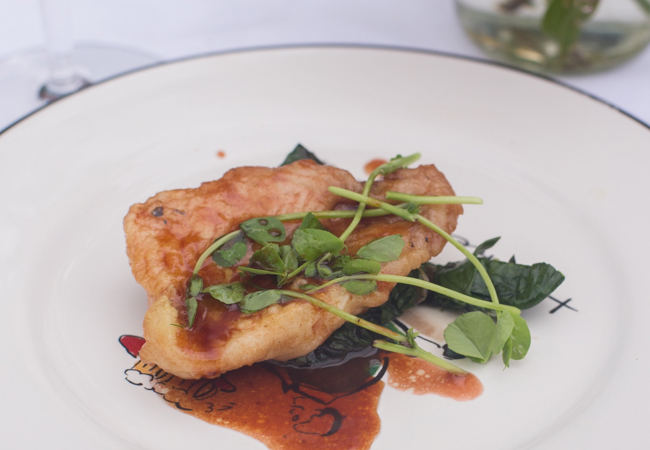
Minnesota walleye (courtesy of Leaf) in agro dolce (sour and sweet sauce) with toasted almonds was served on a bed of grilled greens. The fish was perfectly cooked, but the balance of the sauce tipped to the sweet side, and the dish could have used a bit of salt. The accompanying Alexis Bailly Seyval Blanc from Hiawatha Valley (the only Minnesota wine to appear on the table) was fruit forward and highlighted both the agro and the dolce of the fish.
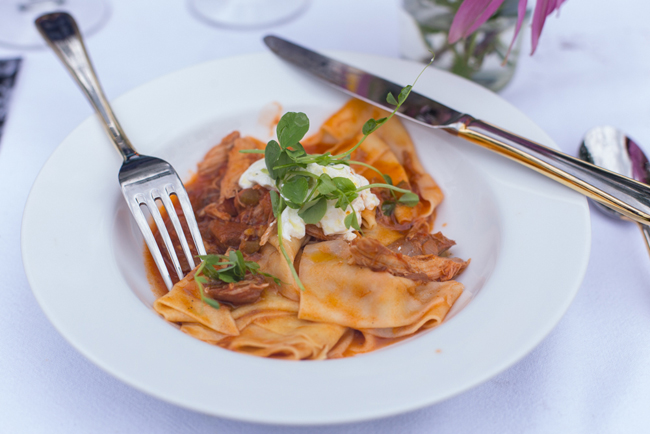
Leaf introduced the fourth dish, maltagliati with wild game booya and marinated labneh, by explaining that booya is a stew that is slow cooked as the backdrop to a party, using contributions from friends and family members. This booya had been prepared on site the previous night with pheasant, venison, and rabbit from the chef’s freezer (it’s not hunting season, after all) and seasoned with fresh bay leaves. The maltagliati were rolled thin and cooked just past al dente, so they were tender, yet still chewy. They was a delightful, starchy base for the shredded game. It was hard to tell what had once been feathered and what furred after all that stewing, but the booya came together as a savory conglomerate with a hint of sweetness. The lemony labneh added a bracing clarity. Château Eugénie 2011 Cuvée Réserve de l’Aïeul tasted of plum and juniper, standing up boldly to the spiciness of the booya and the tartness of the labneh.
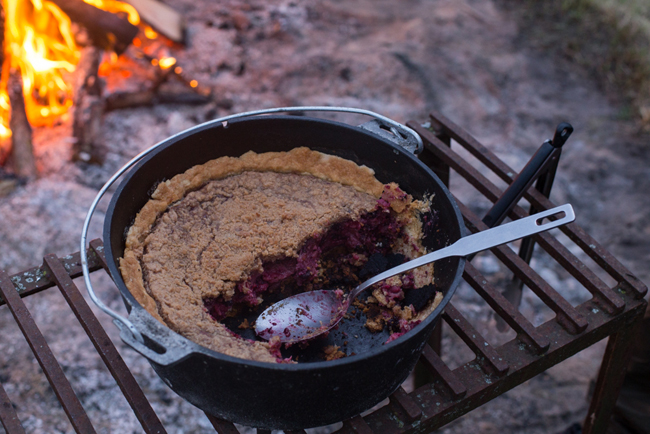
After the booya, we moved to a bonfire to enjoy homemade daylily ice cream and wild berry cobbler (berries foraged and prepared by Gallop), which had been baking in a bed of hot coals all evening, with a glass of Quinta do Noval Tawny Port from Portugal. Dessert was a worthy end to a superb meal highlighting the forager’s bounty that Minnesota has to offer.
